Reviews1
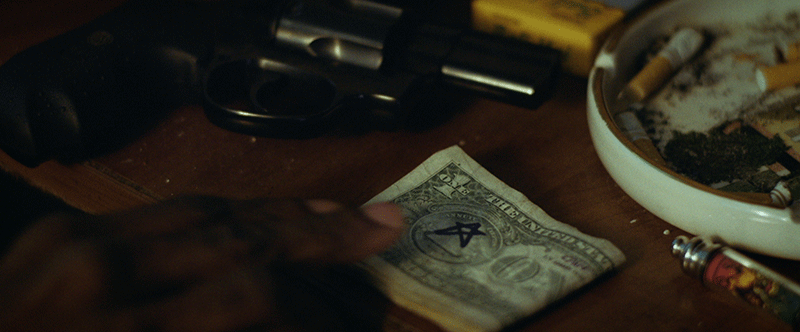
CAT INDEX
CAT INDEX OVERVIEW
SCREENPLAY
MAKING
ACTING
ONE BUCK
By Miguel Ángel Barroso Image (above) the "One Buck"
One Buck, is the title of a disturbing plot that shares equal parts with the thriller and the sordid but deeply moral drama of a modern society broken in many pieces. It looks for desperate exits without finding them, except if they approach the hell, which is nothing other than the salvation of the soul. Although One Buck, does not have an absolute artistic originality; that is to say: a full author has not yet been defined and dedicated to a world of his own, he does have many virtues and certain formal findings regarding the treatment of violence and, above all, of sex. There is narrative economy, austerity and commitment to the pursuit of a film ethic to be honest with the viewer. There is a visual force that unites with a careful work of casting, and a solid work with the actors that contributes to paint the whole range of pale colors that One Buck has from beginning to end. One Buck es el título de una inquietante trama que comulga a partes iguales con el thriller y el drama sórdido, pero profundamente moral de una sociedad actual partida en muchos pedazos, que busca salidas desesperadas sin encontrarlas, excepto si estas se aproximan al infierno, que no es otra cosa que la salvación del alma. A pesar de que One Buck, no posee una absoluta originalidad artística; es decir: no acaba de definirse un autor pleno y consagrado a un mundo propio, sí tiene muchas virtudes y ciertos hallazgos formales en cuanto al tratamiento de la violencia y sobre todo del sexo. Hay economía narrativa, austeridad y compromiso con la búsqueda de una ética cinematográfica para ser honesto con el espectador. Hay fuerza visual que se une con un esmerado trabajo de casting, y un sólido trabajo con los actores que contribuye a pintar toda la gama de colores pálidos que One Buck tiene de principio a final.
HULDRA: LADY OF THE FOREST
By Shailik Bhaumik Image (above) from Ove Valeskog's Huldra It's not easy to make a cult horror film these days without falling into the trap of getting a lot of flack for redundancy. But Ove Valeskog’s Huldra: Lady of the Forest has risen above traditional horror tropes while also paying endearing homage to those who came before. A huldra is a seductive forest creature found in Scandinavian folklore. Associated with Christianity, a tale recounts how a woman had washed only half of her children when God came to her cottage; ashamed of the dirty ones, she hid them. God decreed that those she had hidden from him would be hidden from humanity; they became the hulders. The film tells the story of Nanna, who lives a lonely and regimented life in Berlin. When her life crashes she receives a phone call from her long lost love, Martin, who reminds her of their carefree childhood. Martin wants her to join him for a hike in the wilderness together with some of their mutual childhood friends. One of them, Peter, has been told of a strange hermetic hippie-like society out in the Swedish wilderness, and the group sets off on an adventure unaware of the fact that once they reach their destination nothing will ever be the same again. As they are drawn deeper and deeper into the forest, mysterious events start to unsettle the dynamics of the group. Reality begins to shift in ways none of them could have imagined and relations between the friends become strained and volatile.

Harald The fantasy element in the film is the hulder, a female forest spirit embodied in a beautiful woman that the hermit hippie Harald refers to as his daughter Gerda. However, Harald is dying and his earthly creature is breaking down from the hard life of a lonely and twisted narcissist. A replacement needs to be found, hence his sinister plan for the group. But who will the hulder choose as her new companion? With lines between reality and fiction blurred, ‘Huldra: Lady of the forest’ is even more intriguing; giving us the chance to see how the character, the films and the society they critique have evolved throughout the years. Hulders have been part of Nordic mythology for centuries, and was recently depicted in the Norwegian fantasy thriller “Thale”(2012). ‘Huldra: Lady of the forest’ is only the second Nordic film in modern times to feature the creature. Style-wise, this film is the avant-garde and artsy facture of the earlier films; a more contemporary guerrilla and indie approach is more logical, especially as the filmmaker works on tight budgets. Luckily, ‘Huldra: Lady of the forest’ manages to do something very impressive - it takes itself seriously by mocking its very existence. Whether you see the previous films on huldra or not and whatever your movie tastes are, ‘Huldra: Lady of the forest’ is worth the experience. The film may not be a masterpiece but as a representation of the state of a Swedish psychological fantasy thriller cinema’s subgenre, it is an entry that should appeal to cinephiles interested in foreign and genre films...as long as they have the guts for it.
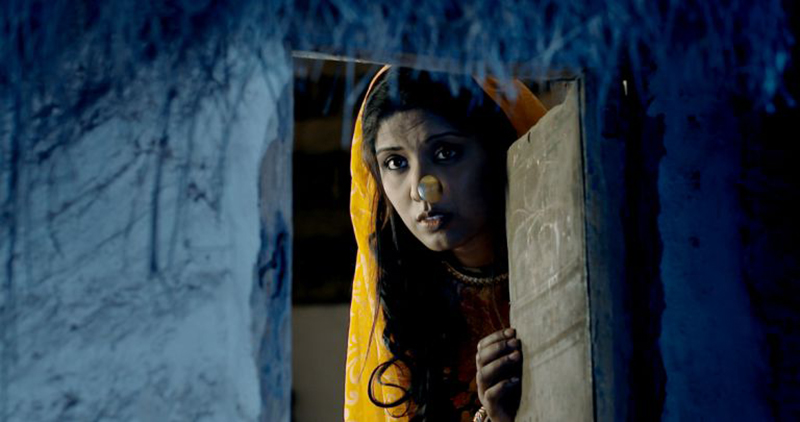
SHACKLE
By Arindam Bhunia Image (above) from "Shackle" One death can change the whole social system! Women are only the machines used for fulfilling sexual needs and producing children! This myth as protested by a woman herself in director Dedipya Joshi’s, ‘Shackle’. Standing in the Twenty First century when we are talking about female empowerment, many women are still being driven in the dark. To date, women have to sacrifice their lives for the sake of despicable social rituals. In ‘Shackle’, beautiful, educated and twenty-six-year-old Abeera, is the victim of her own village's rituals and taboos. The “dream” of marriage broke when she was forced to get married to Keshar, a virtual child only 11 years of age. The pure love, an unknown bonding and a beautiful chemistry between the unmatched couple Abeera and Keshar as breathtakingly picturised by director Dedipya Joshi. But how can this fairy-tale exist in such a tabooed society? Abeera and Keshar’s love story also stands in the face of question when friends make fun of young Keshar about the relationship between Keshar and his four-year-old daughter Guddia. But Keshar totally gets a bolt from the blue when he comes to know that the bad egg between he and Abeera was none other than his own father. To save his ladylove from the dreadful situation, Keshar’s silent protest to his father is exceptionally shown in the movie. Good times pass like New York minute. In the spur of the moment Keshar kills his father and is arrested by the local police. The rest of the movie is for the sake of love. How the two lovers fight with their destiny and how Abeera sacrifices her life to secure her daughter and the other village women’s future. As a director it is always challenging to take such an uncommon topic. With shackle Dedipya Joshi undeniably passes with distinction. Apart from a social message ‘Shackle’ is also a movie of relationship crisis. Shackle means something that confines one’s legs and arms or something that checks or prevents one’s free action. By taking such an eccentric topic the director has done justice to the title of the movie. Through this uncommon and arresting film, he has brilliantly shown the pain and anguish of women in rural India. Our Director has selected a very unusual cast for very unusual roles and each actor has made such a fair exploration of their character that one can easily connect. Rich compositions and background music are mostly situation-based and aid the narrative. The Cinematographer’s eye for detail cannot be missed as he romances the camera with imaginative angles and lighting. Independent films such as Shackle are always welcomed for the true perception of our society.
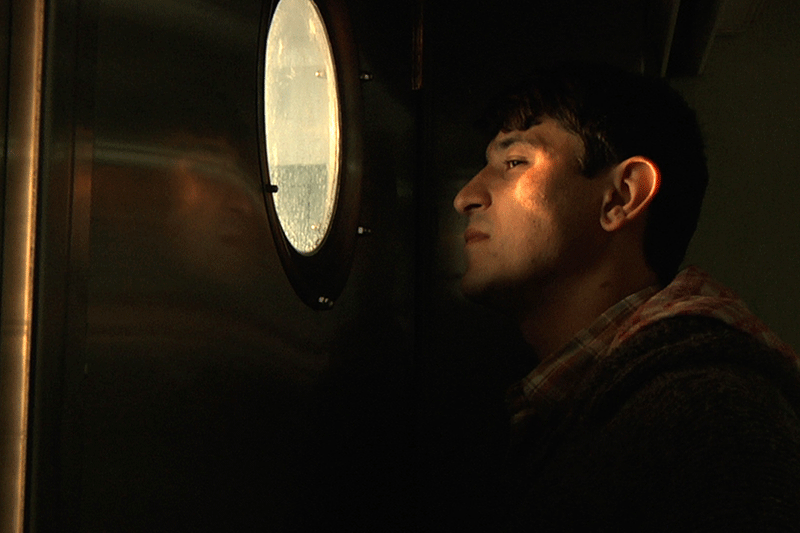
LEAVING GREECE
By Victor Eustáquio Image (above) from "Leaving Greece" There is always something disconcerting about a documentary when it seeks to state a point of view, an opinion beyond what it intends to portray. Because we are probably waiting for a journalistic piece, supposedly unbiased and objective. Because we are probably waiting to be able to judge for ourselves. In 'Leaving Greece', it may be its greatest weakness. But also its greatest virtue. Because even though it is based on a conviction and militancy against Europe's contradictory policy towards refugees, Anna Brass tries to demonstrate it with a 'case study', as a hypothesis that guides a learning path. And that’s the key with she addresses a particular situation. Of the refugees in Greece, in this case of three Afghans, who are desperate to reach the other ‘Europe’, desperate for crossing an invisible wall that, after all, separates Greek territory from the rest of the European fortress. And with this she builds a thesis: ‘they'll probably accuse us of stealing electricity, even though all we have are candles...’, as one teenager says, one of the group that Anna Brass's camera follows. From this point, it is up to each one to judge. And critically think. On the conveniences and inconveniences of a phenomenon that is shaking the principles and humanistic values of the so-called solidary Europe. This means that the apparent naivety of 'Leaving Greece', in the way it points the problem, is just a subterfuge of pudor. And of stupefaction. From the filmmaker who finds a reality she didn’t know, from the filmmaker who thought that Greece and Europe could be the point of arrival and not an enclave or a prison, a space of segregation and many contradictions. That is why ‘Leaving Greece’ should be taken seriously. But not only. Because as an audiovisual work it also shows an excellent technical mastery of cinematic language with the constant search for an aesthetic sense for a dimension where aesthetics does not seem to make sense. It is hard not to be impressed by the final result: a disturbing documentary, original by the approach; inspiring, by the pudor with which it is led; and effective in what it proposes, as an effort of civic militancy.

A BRIDGE BETWEEN TWO WORLDS
”A Bridge Between Two Worlds relates how Muslim and Catholic farmers, on the Island of Flores, Indonesia, overcome poverty and enhance their environment with the support of North American and European families.” - Pascal Gelinas By Sandip Pratihar Pascal Gelinas (above) with his new family When I starting to see the film I remember my village. However, “A Bridge Between Two Worlds," as it applies to this film similar to a human being to another human hybrid not only a bridge between the two worlds, and along with it their sorrow, pain and their social status is well discussed. This is the beginning of a worldwide family. The situation highlighted the fact there has been admirable. Would that help the poor people of desperately needed. If we really moved forward with people, if they would not have so much trouble. Hybrid of the two religions with each other a helping hand in an effort to reach the door steps of the development of rural credit. Wanna the baby boy in this film, to see that boy depend on garbage for his subsistence and for a living are dedicated to our so-called civilized men should be ashamed to see that, in this age, where he went to school. Dog and baby boy was almost the same species. Both are living from garbage.
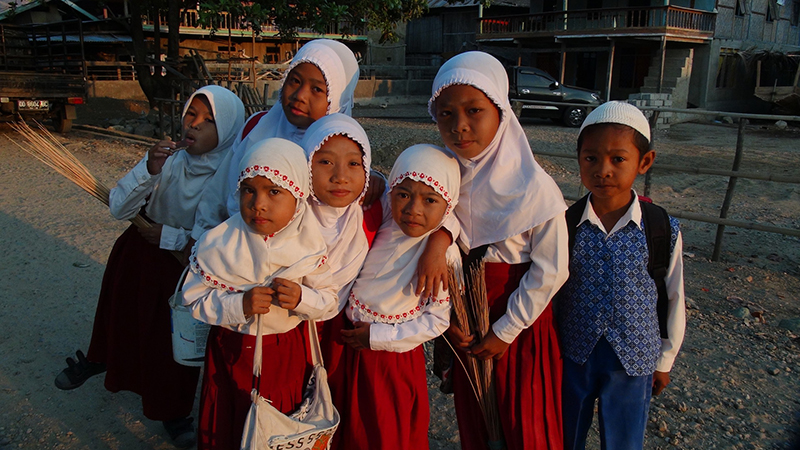
Civilized people ought to be ashamed when it is in the name of religion say that we cry for the people of this will soften wear beautiful clothes will be on stage at the public place, and we do promise after that the promise are buggerall at work. This bold move manager and them survive Worldwide family life has highlighted the extraordinary. We often say one thing to you, if you have more than that, there are some eternal with him, help him, though rarely do we have to do this, the work of this aid has a very nice way. Statute glasses shop. At the end of the last film worldwide family and children's film stands more beautiful smile makes. Just like Happy ending. Smooth editing, well crafted cinematography and each shot division has been well arranged.

TWIN STARS
By Panchali Kar Image (above) from Twin Stars Twin Stars is a movie that tells a tale of a beautiful bonding between two brothers, who were separated by circumstances; and they finally meet after years. Can and Cihan were identical twins and in their childhood they discovered two of the brightest stars, up in the sky,and named them Castor and Pollux. They could connect with the two stars, as if,that is where they belonged to. After years of separation when they meet, they realized that in spite of the major differences, they still shared the same bond, the same connection; just like the two stars, who no matter how far away they are from each other, they are still under the same sky. The biggest plus of the film is in it's subtle treatment. Within a span of 18 minutes it touches various issues and handles them with precision. Though the story revolves around the brotherhood of Can and Cihan, issues like alcoholism, domestic violence, and homosexuality come into focus at various points and none of the issues overpower the flow of the narrative. The film was submitted in the LGBT Films category, and it marks a great example of how homosexuality should be normalized in our films. There is not an ounce of overreaction or being preachy in highlighting the issue of homosexuality. Cihan's initial reaction on getting to know that his brother is gay and then embracing his choice. shows the maturity of the director. This is where another aspect is added to the movie: this could very well be called a “pro-choice” movie. Technically the film has earned certain brownie points. Realistic light design, situational sound effects -- starting from the crickets to the crows, minimal background score, interesting frames; the overall impact is visually appealing. The actors delivered steady performances. The young actor playing the double role of younger twins is excellent. The actor playing older twins had the major scope to perform, and he made the most if the opportunity. The character of the drunkard father could have been more reliable. This movie not only delivers a positive message, but also leaves an air of positivity, which makes the audience to think, even after the movie is over. Thumbs up to the team for the great effort.
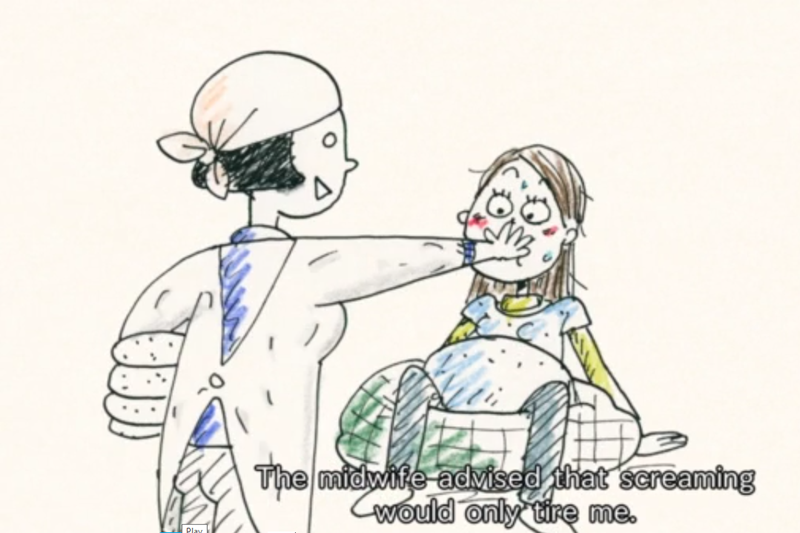
BIRTH - WEAVING LIFE
By Panchali Kar Still (above) from "Birth-Weaving Life" Birth - Weaving Life is a very smart project. Childbirth is one of the most common occurrences in our daily lives, yet there are uncertainties: there is fear, pain, agony, and above all, loss of lives. The prime focus of this project is the first hand experiences of the mothers interviewed and the stories are interwoven from their point of view. Another major USP of the project is it’s use of animation, which has simplified the complexities and the juxtaposition of emotional and physical changes that a mother goes through during the childbirth. The animation format has elevated the project from being just another documentary to an informative and an educational material, to conduct workshops for the children and the young women who are planning for motherhood. There are no flowery words regarding how blissful or heavenly feeling it is to be a mother; rather this film focuses on the realistic side of a journey through undulating emotions towards the bigger picture. Adding to the feelings of a mother, what is really commendable (especially about the first and the last stories) is that, they have portrayed the panic, helplessness, and overwhelming joy of the father, accurately. The man can empathize with the immense pain his wife is going through, however their helplessness of not being able to do anything about it often make them inert, which again gets nullified by the joy of holding their child. Capturing the emotions of the father instead of overlooking that side of the story is what makes the project even more complete. The film comprises of three narrations from three different mothers, represented by three different styles of animations. The first story gives the feel of the crayon sketches of a toddler. It has a wonderful comic timing to depict the whirlpool of mental and physiological crest and trough a mother passes through, during the process of childbirth. Simplistic yet very bright colour-palette is used to prepare the animations. The second story has a watercolor like effect to it and it is more of a direct emotional narration regarding the bonding between the mother and the child. The third story has a charcoal sketch like texture and the transition of emotion has been represented by magic-realistic random transitions of the visuals. The fear and the gore are well depicted by the grainy monochrome colour scheme of the story. The background music has been kept adequately simplistic throughout the length of the movie. Above everything the thought process of breaking the straightforwardness of the very concept of documentary films and mingling documentation with animation is a welcome step.
[ 
93 NOTOUT
By Shevaun Cavanaugh Kastl Still (above) from "93 Notout" We've all heard it, said it.. You’re only as old as you feel. The classic turn of phrase is the prominent theme of 93 Not Out - a narrative short awarded at this past month’s festival for first time filmmaker Arudra. The storyline of the film is neatly laid out as one elderly man’s relentless quest for a seemingly unattainable book, Kadavullai Thedi (Searching of God) and his determination to ride a bicycle that both his overbearing son and doctors have advised against due to his age and the pacemaker in his chest. His name is Kaliyaperumal Chinnakrishnan, though only revealed in the opening shot of his passport photo. He is 93 years old. We first meet him in early morning. Outside is still dark. A chorus of birds harken the rise of a new dawn. Suddenly we are inside a small room with a small bed and the sleeping form of the elderly Indian man, arms crossed over chest in peaceful repose, looking frail and old. But then his eyes fly open - eyes belonging not to a man in the twilight of his life, but to a younger self, open, attentive, earnest. The clock at his bedside continues to tick, the alarm has yet to go off but this man is ready to start his day. From the moment those wide eyes opened, this film had me. There is something so captivating and honest about Kaliyaperumal that I found myself instantly engaged in his story, before even knowing what it was. Eyes filled with quiet angst and belonging to the young man inside who never grew old, who still wants things, feels things, trapped in an aging body. His movements are slow, methodical. He takes great care in bathing, dressing, brushing his dentured teeth,.. His face is lined with deep-set creases; His hair - a tuft of white on the back of an otherwise bald head, thin lips curl ever-so-slightly under in an expression of steadfast determination as he readies himself for a new day. A new day with a new desire. Having heard a book review on the radio, and being an avid reader from the looks of the wall to wall bookcase crammed with texts, Kaliyaperumal goes in search of a copy. When he finds it at a local bookstore however, he cannot bring himself to buy it for such a high price. A group of young boys ride past him on their bicycles and as he watches them fly by, we are transported to the memory of himself as a small boy, riding his own bike for the very first time. The revery is disrupted with flashes of medical reports, the circular imprint of a pacemaker on his chest, the words “should never ride a bicycle again..” “risk your life..” and “remember.. you’re 93.” 93.. But Not Out. as the title of the film reminds us.. As the boys wheel by, Kaliyaperumal experiences the familiar call to action. “I will ride a bike before I die,” he proclaims. And thus it begins; the hero’s journey. Arudra does a fine job of presenting a nicely textured spin on the classic motif. In an agist society where everyone calls him “Grandpa” and no one takes him seriously, our protagonist strives to stay relevant in a faster-paced, new-world order where his ideology and sense of tradition has put him at a disadvantage. We follow his physical and spiritual journey as he fights against the inertia and dormancy of old age, restores his childhood bike and rides again. Though not without struggle. His first attempt is a painful fall, and it is only when he hears that the book he has sought after has been discarded and collected for trash that he must face adversity and ride again. This is a well-crafted, heartwarming film that reminds us there is nothing that cannot be manifested if we truly are young at heart.
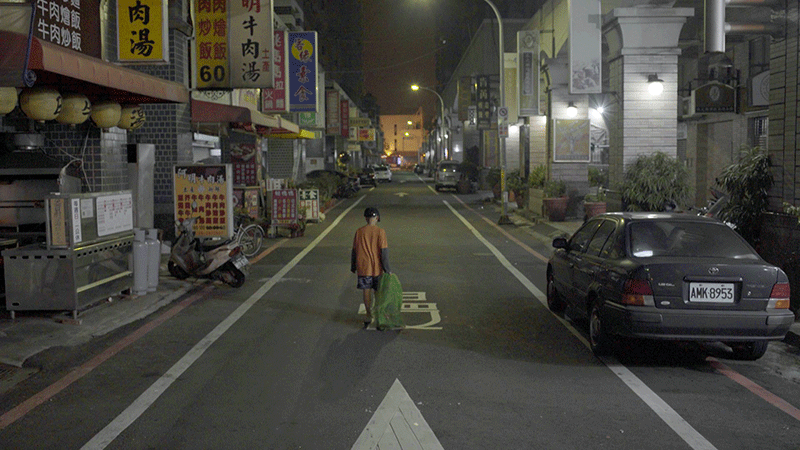
PRAXIS
“There is no greater love nor bond than that between a Mother and a Son...” By Shevaun Cavanaugh Kastl Photo still (above) from "Praxis" It's a simple story. A small Asian boy makes his nightly pilgrimage to the local scrap yard to get money for his recyclable trash. Hardly a word of dialogue is uttered throughout the film, which consists entirely of the boy’s journey along the streets of Taiwan shuttling a large, clumsy bag of plastic and tin behind him. He does this everyday, raggedly dressed in bargain basement tee-shirt and shorts, frayed ball cap and shabby sneakers full of holes. His face is smudged with dirt. He is alone. He stops at a garbage can, scours the contents to add to his bag. His face far too stoic for a boy of nine or ten. This is a child who has seen and experienced far too much for his young age. He uncovers a pair of sneakers, a little too big for his feet but in far better condition than his own. Continuing his route, now sporting the found footwear, he is distracted by glimpses of happy people. Families. Through a restaurant window, a child blows out birthday candles to the applause of his parents and siblings. Outside a little girl laughs as she swings on a coin-operated Ferris wheel kiddie ride. Her Mother watches on, swaying to the music and doting on her daughter as the little girl squeals with delight. For the first time, the boy stops moving, his eyes fixated on the happy scene. It is only when the little girl notices and points him out that he bows his head and walks away. This is a boy who longs for his mother. There is no explanation for her absence, only that she is not here with us. The film is structured like a series of vignettes. Slices of city life as the boy sees it. It would be sad, but though the boy journeys unaccompanied, he is not without companionship. The streets themselves and brief encounters with the people in them leave an imprint: A race with the garbage truck; A mute woman whom he helps carry a trash cart to the street. She thanks him and rubs the dirt from his cheek with maternal care; A sleeping vagrant in a subway tunnel huddled beneath a blanket and without shoes. Our boy removes the new shoes he has found and leaves them, trodding back along his way with his old shoes full of holes. Moments such as these make this story heartwarming. This is a good boy. We as viewers hope for a moment of joy. For this child to be a child. And we get it. With the coins he receives as payment for the recyclables, he returns to the kiddie machine, slips a coin into the slot and rides to the tune of a Ferris wheel. Suddenly he is just a child and the image of a doting Mother appears. For a brief moment, everyone (us included) are happy. But the ride comes to an end and the image disappears. The boy calls out “Mom..” But he is alone again. The film ends with a long shot of the boy with his bag, shuffling along in shoes full of holes, the city streets of Taiwan a constant companion.
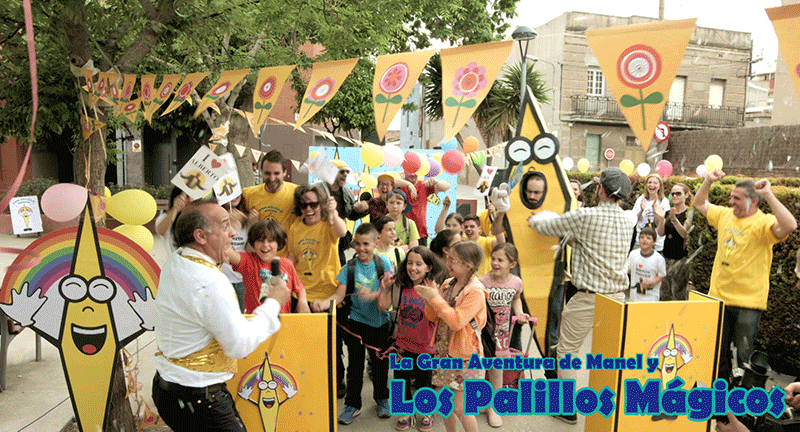
THE GREAT ADVENTURE OF MANEL AND THE MAGIC TOOTHPICKS
By Sandip Pratihar Image (above) from "Manel" This is the story of Manel, a young adolescent who leads the world at PlayStation. Through the eyes of the baby boy the scenario is well presented and we can see how the human species slowly becomes an instrument. In this story, young Manel has his heart set on getting a PlayStation for his birthday. When Manel doesn't get his PlayStation and receives a box of toothpicks instead, he becomes violent. There's good symbolism incorporated into some of the set design; in the bedroom the parents' picture is a good combination with the old songs. The child's will to have the best new thing, or to be as cool as, or cooler than all the other kids, compels him to enter a contest. Toothpicks: Within the symbolic structures of the very, very good in contrast to everyone's intoxication with PlayStation, there is a positive message to the dynamic between Manel and the young girl, and then story becomes more beautiful. This film carries a relevant and imperative social message conveyed through fast moving and colorful storytelling and the use of very good music. 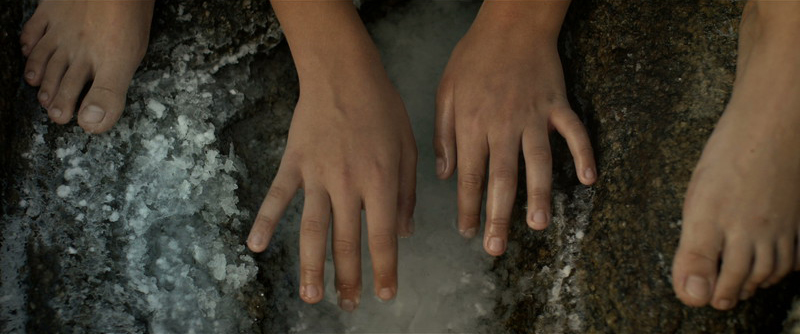
248
By Daniela Lucato Image (above) from 248 An experimental work through which poetic images and an original voice-over drives the audience into the mind of the protagonist and his metaphorical dive. 248 is divided into chapters that simplify parts of the film structure; represented in steps or blocks in the protagonist’s life. Through every chapter we walk in his footsteps, meeting the people who love him and tell him in a few sentences through an imaginary dialogue while he holds his breath plunging deeper in the water. Sometimes they don’t have many words, they just look at him, touch him, walk with him. “Don’t have fear of the future”, says his son, and like in a photographic film made of images from his memory, Massimo takes his decision. An inspiring and fresh work, where the sound also plays an original role in revealing the film's quality from the beginning. [mks_separator style="solid" height="2"] 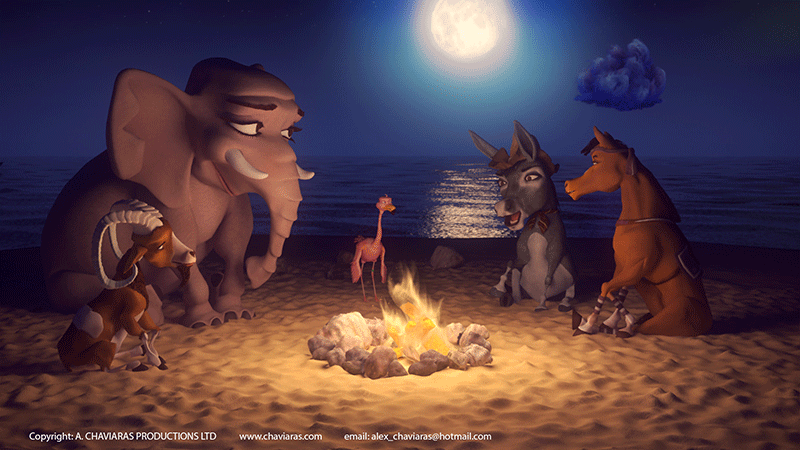
AGRINOUI
By Daniela Lucato Image (above) from the film Agrinoui Olympia is a young racehorse who decides to escape from the race world because she's afraid to disappoint her strict father. He has no compassionate for her failure and doesn’t understand her wishes. Olympia begins a journey where she meets a team of funny characters who, like her, escaped for their own personal reasons from other horrible places. Through beautiful landscapes and inspiring spots, the small team shares their experiences together and she learns how to be self confident and believe in herself. A beautiful and simple tale addressed to children that teaches us that there is always a solution and the importance of trusting ourselves. The film is also pertinent to the adult world as it reflects the pressures that quite often children are put under by . Other significant teachings come from the journey, like the importance of playing for the pleasure of participating and not just with the purpose to win, as well as the teaching of not giving up at the first difficulty. Beautiful music and nice aesthetics.

A CAPTAIN UNAFRAID
By EJ Wickes Motion Comic still (above) from "Captain Unafraid" “We loaded our cargo at the Statue of Liberty. Had our ordnance exploded at that hallowed spot, I would have been know by an altogether different name. I did not require much persuasion to induce me to take command of the expedition, there was quite enough danger about it to make it attractive, and being of Irish parentage I was favorably disposed towards dynamite on general principles.” - Dynamite Johnny O'Brien Not often are we intrigued by a character from history unless they were either a hero or a scoundrel. This well researched and award winning documentary produced and directed by Charles O'Brien, tells the story of a 19th Century roustabout who lived both paradigms almost simultaneously. From a scrappy kid growing up along New York's East River, he started his career as a tugboat pilot and blazed a career path of “avoiding” the law and enabling revolution. This is the story of Dynamite Johnny O'Brien and danger was his business. The impetus of the story comes from a biography written in 1912 by Horace Smith, entitled A Captain Unafraid, The Strange Adventures of Dynamite Johnny O' Brien. American history is rich with adventure, discovery and revolution. It has been romanticized and embellished with much pomp and circumstance. The virtue of this documentary however, is that it needs no exaggeration of character or sensationalizing of facts. Since birth Johnny had a fascination with the sea and learned his trade by hanging out at the docks throughout his adolescence. By the time he was a young man he had gained a reputation for being a very talented and confident pilot. The more dangerous the expedition the more likely he was to take it. He became one of the few captains who were known to navigate through rough waters and haul extremely unstable materials like dynamite. O'Brien stayed obliquely noncommittal but was active during America's Civil War and participated in other revolutionary causes with rebels in Haiti, Honduras, Texas and Mexico. To call him a rebel without a cause I think underrates his spirit of freedom and the attraction he had to the underdog's fight. It didn't take much to compel Johnny to aid the cause of Cuba's revolution against Spain. It was when he successfully hauled sixty tons of dynamite through a brutal lightning storm at sea, that he earn the name “Dynamite” Johnny O'Brien. Running guns and dynamite through the Spanish blockade aided and abetted the liberation of Cuba and to this day, Captain O'Brien is revered as a national hero in Cuba. This rich historical tapestry is woven with interviews including Johnny's descendants, local historians and the caretakers of some of properties where Johnny resided. Segments of “motion comic” styled animation bring contrast to the cinematic effect, maintaining a rustic aesthetic in keeping with a 19th Century seafarer's tale. Mr. O'Brien, the documentary Producer and Director does a smart job on modest budget. A Captain Unafraid is a must see for anyone with a propensity for American History and the fascinating individuals who forged it.
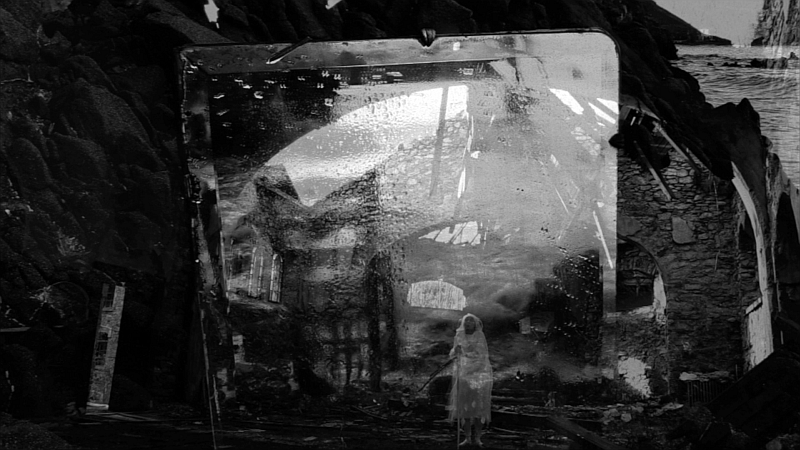
STORY FOR AN EMPTY THEATER
"I believe that photography is an adaptation of vision to a spiritual necessity - the eye forms an image which in its turn, through its inmost resonances, refocuses and transforms the gaze itself." - Cesare Bedognè By EJ Wickes A film by Aleksandr Balagura and Cesare Bedognè. Produced by ABao AQu and Studio Incantations, 2015 Experimental art films are rarely self explanatory. The artist, writer, director comes at it with nuances or fragments of dreamlike images. The established perimeters of pacing, structure and development don't always fit the armature of the visual film experiment. Story for an Empty Theater flows like a diary, or a book of prose written by one who is deeply in love. Fashioned from the writings and photography by the Italian artist Cesare Bedognè, the work is an amalgamation of a diary, tintype styled photographs and performance art suggestive of contemporary Japanese Butoh and Grimaldi Pantomime. Filmed in locations from the artist's past; an abandoned sanatorium in the Italian Alps and his present, the island of Lesvos in Greece, Story for an Empty Theater is tied skillfully together by Russian director Aleksandr Balagura. A lonely chair at the edge of the surf; an abandoned sanatorium, the lush monochromatic texture of the film and it's melancholy narrative, serve the artists well in their visual monument to love despair, death and abandonment. “Story” moves like living pages from a photo album sifted from memories captured through the lens of the artist's mind's eye. To say anything more about this film would almost be a disservice to the viewer. Like paintings and other fine art, we tend to over intellectualize in our search for a clear schematic to their design, rather than just enjoying the sensation of being part of a very well constructed a daydream.
 Miguel Ángel Barroso is a dedicated and published Film Historian. His credits include organizing numerous international film festivals and authoring several books including “The Hundred Best Films of Italian Cinema History” (2008) and “The Hundred Best Films of the 20th Century” (2009). Miguel organized the videoconference, "The Unforgettable Anna Magnani", in tribute to the actress Anna Magnani on the centenary of his birth, held at the Italian Cultural Instituto Madrid.
Miguel Ángel Barroso is a dedicated and published Film Historian. His credits include organizing numerous international film festivals and authoring several books including “The Hundred Best Films of Italian Cinema History” (2008) and “The Hundred Best Films of the 20th Century” (2009). Miguel organized the videoconference, "The Unforgettable Anna Magnani", in tribute to the actress Anna Magnani on the centenary of his birth, held at the Italian Cultural Instituto Madrid.

Shailik Bhaumik is an award-winning filmmaker and entrepreneur. Known for his feature film "Dasein", Shailik is the founder and Chairman of Human Lab Corporation, a Multinational Film Company whose mission it is tohelp Independent Filmmakers survive and thrive in this highly competitive industry. Shailik oversees worldwide operations including production, distribution, and marketing for HLC's live-action films, as well as films released under the HLC banner.
 Victor Eustáquio is an award-winning film producer and screenwriter and the Director of Calcutta International Cult Film Festival. A novelist; screenwriter; film producer and composer, Victor currently lives in Portugal and holds a BA in Political Science and a PhD in African Studies. As COO of HLC Studios, Victor coordinates the company’s various distribution strategies to maximize the value of HLC’s content across all current and emerging digital exhibition platforms.
Victor Eustáquio is an award-winning film producer and screenwriter and the Director of Calcutta International Cult Film Festival. A novelist; screenwriter; film producer and composer, Victor currently lives in Portugal and holds a BA in Political Science and a PhD in African Studies. As COO of HLC Studios, Victor coordinates the company’s various distribution strategies to maximize the value of HLC’s content across all current and emerging digital exhibition platforms.

Panchali Kar is a Dancer, Choreographer, Actor and Filmmaker. In addition, Panchali is a devout advocate for egalitarian social change, is affiliated with the NGO, Responsible Charity and currently working on a photo documentary on LGBT right s. She is an avid scholar and veteran of the performing arts and a seasoned instructor. Panchali maintains several degrees in the Arts including a M.Mus degree. Ms. Kar is also affiliated with AKTO, a Kolkata theater group based in the city in which she resides.
 Yubo Fernández is an Actress, Writer, Producer, Director and the Founder and President of Obuy Films. She lived in NYC, attended Atlantic Film School Workshops and returned to study cinematography at Santo Domingo's Altos de Chavon School and studied under Claude Kerven, Chair of the Filmmaking Department at New York Film Academy. “How Do We kill Luisa” and "Peldanos de Dolor" are two films that she's produced. Yubo is also featured in several films from the Dominican Republic
Yubo Fernández is an Actress, Writer, Producer, Director and the Founder and President of Obuy Films. She lived in NYC, attended Atlantic Film School Workshops and returned to study cinematography at Santo Domingo's Altos de Chavon School and studied under Claude Kerven, Chair of the Filmmaking Department at New York Film Academy. “How Do We kill Luisa” and "Peldanos de Dolor" are two films that she's produced. Yubo is also featured in several films from the Dominican Republic
Shevaun Cavanaugh Kastl is an award-winning actress, writer and producer currently living in NYC. Her production company

Mad About Pictures, has produced three films all currently playing the festival circuit. "The Mourning Hour", her most recent film, just took top honors at The Williamsburg Independent Film Festival in Brooklyn, NY. She is currently writing a thriller feature but continues to pursue her acting career and can be seen on television and online in episodes of Revenge, Criminal Minds and Heroes.

Sandip Pratihar is an award-winning director, writer and filmmaker. As a screenwriter, director and independent filmmaker, he is very pro-active and follows his calling to communicate artistically intrinsic social messages. From West Bengal, India, Sandip is currently living in Kolkata. He has directed three films all currently playing the festival circuit. The short film "SITA", is his most recent work, just took top honours at sixteen International film festivals.
 Daniela Lucato started acting in Padua, Italy. She's lived in Rome, Wellington and Berlin. In 2013 she wrote and directed the theatre piece “Call Me Reality” that debuted in several theater festivals. The Birthday (2014) is her first short film, written and directed in Mandarin and English. "Connecting Fingers" (2015) is her last dance-theatre production and "When I Dance" (2016) is her first feature documentary. Daniela is currently in pre-production on a short film and writing the script for her next feature.
Daniela Lucato started acting in Padua, Italy. She's lived in Rome, Wellington and Berlin. In 2013 she wrote and directed the theatre piece “Call Me Reality” that debuted in several theater festivals. The Birthday (2014) is her first short film, written and directed in Mandarin and English. "Connecting Fingers" (2015) is her last dance-theatre production and "When I Dance" (2016) is her first feature documentary. Daniela is currently in pre-production on a short film and writing the script for her next feature.

E. J. Wickes is a visual artist and the Managing Editor of Cult Critic Film Magazine, as well as the creator and publisher of The Metamodern Magazine. His aesthetics lie somewhere in the vortex between fine art painting and filmmaking. Eric has worked in the Art Department on a variety of Hollywood, TV and independent film productions and as the Creative Director of HLC Studios, he oversees the company's media and publishing division.


